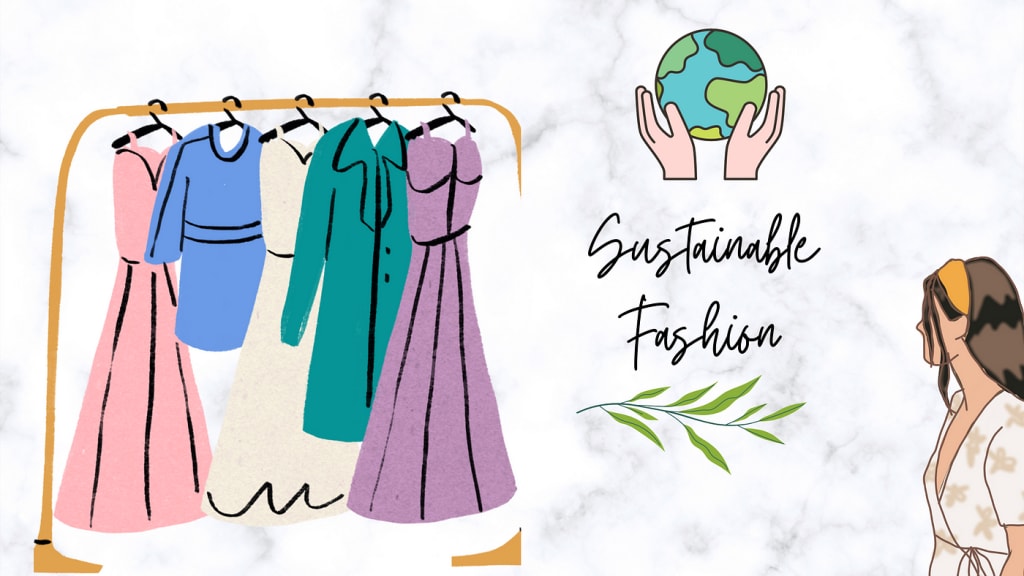What is Sustainable Fashion and What Are its Benefits?
Sustainable Fashion

Introduction to sustainable fashion
The concept of sustainable fashion is becoming more and more “trendy” among consumers, but do we really know what sustainable fashion is and what it consists of?
Sustainability is reaching all industrial sectors and the fashion sector is one of the most involved in the progress towards an economic system based on a circular economy. The current productive model of the textile sector (fast fashion), fast and changing fashion, with large productions, low prices and high rotation of collections, has a high impact on the environment. All of this makes it unsustainable from an environmental and social perspective.
Awareness of environmental issues is growing by leaps and bounds, forcing the textile sector, like many others, to adapt to the new requirements of consumers who are increasingly involved in caring for their environment and respecting the planet's resources. Within this context, the concept of sustainable fashion has emerged, which has come to revolutionize the sector and also to reverse the environmental and social effects caused by it.
What is sustainable fashion?
Sustainable fashion is a new philosophy of textile design and production that aims to create a new production model based on sustainability and social responsibility.
Sustainable fashion is based on the production of clothing with the aim of reducing environmental impacts throughout the production chain, using more ecological or lower-impact materials and reducing environmental pollution and the carbon footprint of products. It also contributes to creating a more socially fair trade, promoting better economic and working conditions for workers.
More and more clothing brands are betting on sustainable fashion , thanks to the drive of a society that is increasingly aware of the need to take care of the environment.
Why sustainable fashion is important
In order to assess the importance of this new concept of sustainable fashion, we must study the environmental impacts related to the textile industry.
To give us an idea, hundreds of liters of water and chemical agents are used just to make jeans. Throughout the production process of the textile industry, various environmental impacts are generated and all links in the production chain have their ecological footprint and environmental impacts.
But not all processes and materials used throughout the entire production chain have the same impacts on the environment. Therefore, the first step to implement this new concept of sustainable fashion must be to carry out a product life cycle analysis, in order to determine which phases have the greatest negative impact on the ecosystem and to be able to focus our sustainable actions on those. elements with the highest polluting load. Only starting from this premise can we implement a textile model based on sustainable fashion.
It must be taken into account that throughout the life cycle process of a textile product, multiple stages come into play, ranging from the extraction of the raw materials that are going to be used in the process, passing through the different stages for the manufacturing and finishing of the textile product, until the final management of the waste generated, the distribution of the garments, and also the end of life of the product, which in most cases is managed as waste without any type of recycling or reuse. All these phases make up the life cycle of each garment and, therefore, analyzing each of these stages from an environmental point of view is vital and the necessary starting point to implement a model based on sustainable fashion.
- Garment manufacturing process
- In general, the process of making a garment can be summarized in the followingGarment manufacturing process stages or processes:
- Spinning: in tGarment manufacturing processhis process, fibers are converted into threads, using different fiber separation techniques.
- Weaving: in this phase, the fabrics are obtained from the thread.
- Finishing: this phase is based on improving the appearance of the garments, eliminating defects and optimizing their properties. To do this, the tissues go through different stages.
- Pre-treatments: removal of impurities that accompany textile garments.
- Dyeing: in this phase, the garments are coloured.
- Stamping: stamping drawings, or defining specific designs.
- Design: preparation of designs for making garments.
- Pattern making: cutting the different textile pieces to make the garments.
- Preparation: preparation of the final garment by joining the different textile pieces for marketing.
- Packaging: introduction into presentation containers.
- Marketing: sale of the product to final consumers.
- Environmental impact of textile production
If we analyze in general what are the environmental impacts associated with the production chain, we could point out the following:
Waste generation: throughout the entire production process, a large amount of waste is generated, such as, among others:
Remains of textile fibers, scraps of fabric.
Waste from packaging, containers or packaging.
Waste from the use of inks, dyes, pigments, paints, lacquers or varnishes or other chemical products (solvents, oils, etc.)
Waste oil and water or hydrocarbon and water.
Waste from the use of resins, latex, plasticizers or glues.
Use of chemical products for finishing textiles that are dumped into the environment, generating toxic waste.
High energy consumption for the operation of the machinery used in all stages of production.
Generation of discharges into water with toxic components, such as dyes to give color to clothing, detergents for washing, chemicals for the treatment of textile fibers.
Emissions into the atmosphere: emissions into the atmosphere of pollutants are also generated, for example, from water heating boilers. Furthermore, during the washing of fabrics, in the desizing process, emissions of aerosols and vapors are produced into the atmosphere, in the dyeing stage, emissions of vapors, aerosols, detergents, dyes, among others, are produced into the atmosphere.
Water consumption: significant amounts of water are used in textile manufacturing during the different stages of the production process, especially in finishing activities.
Since the textile sector is one of the most important in the world, the implementation of a new model based on the concept of sustainable blockchain fashion traceability in the supply chain is of great relevance to achieve the objectives of sustainable development.
Sustainable fashion: the solution for the textile industry
The textile industry has a great opportunity with sustainable fashion to evolve and adapt to a consumption pattern in which consumers are increasingly demanding brands and with respect and care for the environment.
To achieve this, the textile industry must replace the linear production model (based on fast fashion) with a new circular economy model based on sustainable fashion, whose cornerstone is the optimization of resources and efficiency throughout the production chain, increasing competitiveness and reducing environmental impact.
Sustainable fashion is presented as a great alternative for the textile market, as it implies an improvement in all phases throughout the product life cycle, from the production of raw materials, through design, manufacturing, transportation, storage, marketing and sale and final use.
Benefits of sustainable fashion
There are multiple benefits that sustainable fashion has for the textile sector. To list some of them:
Contribute to the care of our environment.
Improve the image as a company.
Reduction in expenditure by optimising consumption of energy, water and resources.
An in-depth study of the product life cycle will help to optimize the most inefficient production phases, thereby optimizing the entire process, not only from an environmental point of view, but also from an efficiency point of view.
Improve product characteristics, making them more attractive to consumers, who are also increasingly aware of sustainability.
Help attract those consumers, suppliers and employees who are committed to sustainability and who, therefore, have sustainable consumption habits
Anticipate legislative compliance, since more and more regulations impose sustainability actions. Likewise, a gradual sustainability policy in the company guarantees current and future legal compliance and avoids long-term sanctions.
In this article, we summarize the practices necessary to become a sustainable company.
About the Creator
Transgenie
Our Delivery Management Software is the ultimate solution for businesses looking to optimize their delivery operations.
https://www.transgenie.io
Enjoyed the story? Support the Creator.
Subscribe for free to receive all their stories in your feed. You could also pledge your support or give them a one-off tip, letting them know you appreciate their work.






Comments
There are no comments for this story
Be the first to respond and start the conversation.